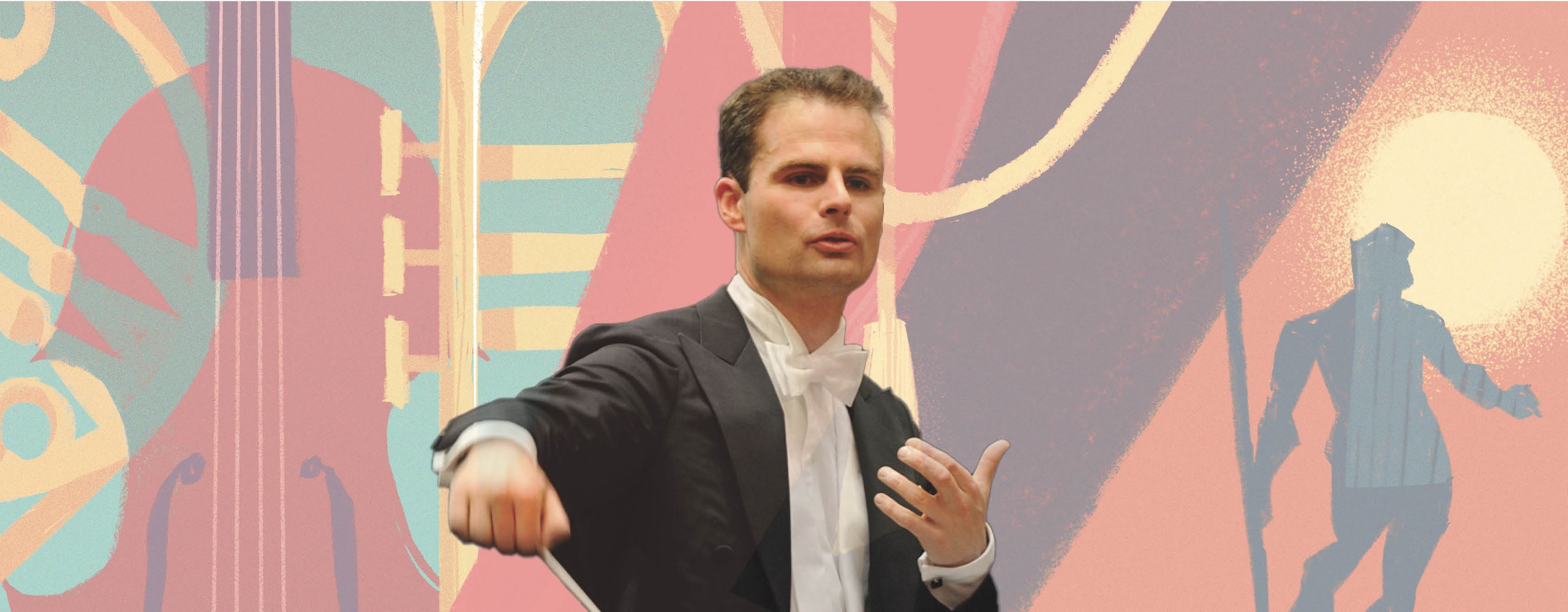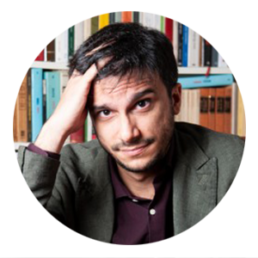CONCERTS 2026 | SYMPHONY
COSTANTIN TRINKS
MOZART Die Zauberflöte: Overture
MOZART Concerto for two pianos and orchestra in E-flat major K. 365
ŠOSTAKOVIČ Symphony No. 15 in A major, op. 141
Program
Wolfgang Amadeus Mozart
Die Zauberflöte: Overture
The Magic Flute Overture is among Mozart’s most symbolic. In just a few minutes it encapsulates the essence of the work: mystery, the search for truth, the light of knowledge overcoming darkness. The beginning, with majestic chords in E-flat major, immediately evokes the ritual and initiatory universe, clearly inspired by the composer’s Masonic experience, which began in 1784 in the lodge “Zur Wohltätigkeit.” The following Allegro, contrapuntal and luminous, on the other hand, reflects the rational and idealistic spirit of the Enlightenment, while the harmonic shadows that creep in foreshadow the conflicts and trials faced by the protagonists of the Singspiel, staged just 66 days before the death of its brilliant creator.
Concerto for two pianos and orchestra in E-flat major K. 365
To get an idea of what Maria Anna Mozart, known as “Nannerl,” sounded like, we need to listen to her brother Wolfgang’s Concerto K. 365, the most affectionate and challenging musical test born in the bosom of two musicians with the same genes. Many clues tell us that this little masterpiece for two pianos and orchestra was intended to have the two brothers, both outstanding pianists, as soloists. The dialogue between the two pianos, lively and full of imagination, authorizes us to imagine them together at the keyboard before fate decided to separate them. Nannerl, older by five years, outlived Wolfgang by another 38, continuing to teach until late in life. She died in 1829, when music history had also dismissed Beethoven and Schubert.
Dmitry Dmitrievič Šostakovič
Symphony No. 15 in A major, op. 141
Composed in 1971, four years before his death, Symphony No. 15 is the last stage of Dmitry Šostakovič’s long and troubled symphonic journey. But more like an enigma than a conclusion. A galloping quotation from Rossini’s Guillaume Tell resounds in the first movement, but soon the tones darken, the quotations become ghosts (such as that of Siegfried’s Funeral March from Wagner’s Twilight of the Gods ), and the music seems to question the very meaning of memory, time, and the end. There is irony, but bitter irony. Lyricism seems shot through with foreboding. In this extreme work, Šostakovič does not close a circle: he leaves it open and invites us – like the title of the novel dedicated to him by Julian Barnes – to listen to the “noise of time.”
Orchestra of the Teatro Comunale di Bologna
45 min. before the start of the concert, the audience is invited to an in-depth discussion of the program by Luca Baccolini, which will be held on the lower floor of the Theater.
Luca Baccolini
journalist, music popularizer and writer, works with the Bologna editorial office of Repubblica and is on the editorial staff of the monthly Classic Voice. For Newton Compton he has published ten books on the history of Bologna. He is the author of theatrical subjects and collaborates as an essayist and popularizer with the most important Italian lyrical symphonic institutions.
SECTOR 1
Full: €45
Over65: €35
Reduced30-35: €30
U30: €25
SECTOR 2
Full: 40€
Over65: 30€
Reduced30-35: 25€
U30: 20€
SECTOR 3
Full: 35€
Over65: 25€
Reduced30-35: 20€
U30: 15€
SECTOR 4
Full: €15
Tickets at €10 for all students enrolled at the University of Bologna, the Academy of Fine Arts of Bologna and the G.B. Martini Conservatory of Music for concerts of the 2026 Symphonic Season.
On sale only during Ticket Office presale hours (Tuesday to Friday from 12 to 6 p.m. and Saturdays from 11 a.m. to 3 p.m.), from one week before the concert, by presenting university badge and self-certification of enrollment for the current year.
This post is also available in: Italiano (Italian)





